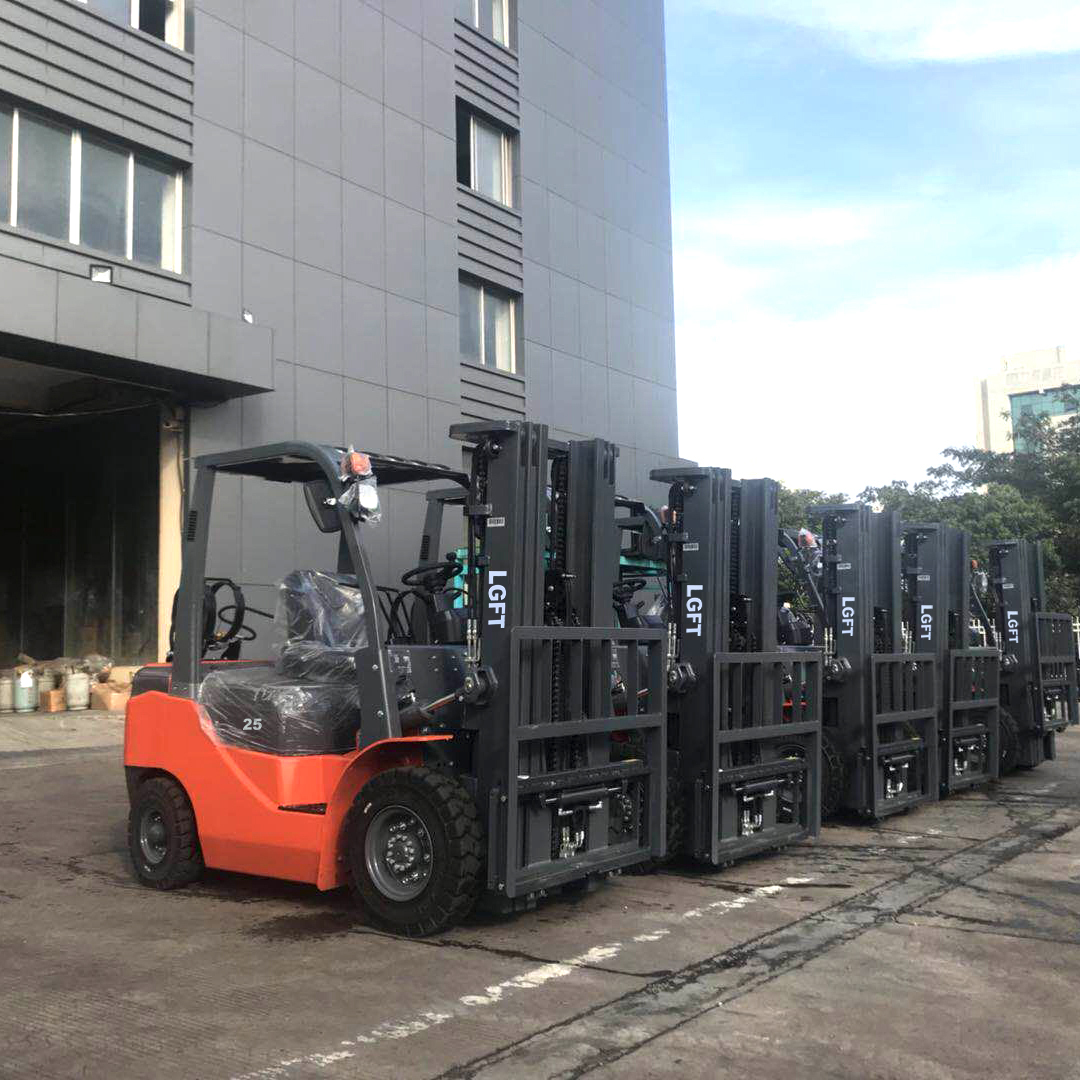Common 5 faults of forklift hydraulic torque converter
(1) Failure phenomenon
The performance is that the engine throttle is fully open, and the inlet oil pressure of the torque converter of the forklift is lower than the standard value under the zero-speed working condition.
(2) Fault diagnosis and elimination
First pull out the oil dipstick to check whether the oil level of the torque converter is between the two engraved lines. If the oil level is normal, check whether there are leaks in the inlet and outlet pipelines. If there are leaks, they should be eliminated according to the specific conditions. If the oil inlet and outlet pipes are well sealed, check the working conditions of the torque converter inlet and outlet excitation valves. If the pressure valve cannot be closed, remove the pressure valve and check whether the components are worn or not, whether the oil circuit and oil hole are unblocked, and whether the spring is permanently deformed. When the part wear exceeds the limit value, it should be replaced or repaired. If the pressure valve is working properly, the oil inlet pipe and filter screen should be disassembled and inspected. If there is blockage, the sediment should be removed and cleaned. If the tubing is unblocked, the hydraulic pump needs to be overhauled and replaced if necessary.
3. Oil spill
(1) Failure phenomenon
It is manifested by obvious traces of oil leakage on the joint surface of the hydraulic torque converter rear cover and the pump wheel and the connection between the pump wheel and the hub.
(2) Fault diagnosis and elimination
3. Oil spill
(1) Failure phenomenon
It is manifested by obvious traces of oil leakage on the joint surface of the hydraulic torque converter rear cover and the pump wheel and the connection between the pump wheel and the hub.
(2) Fault diagnosis and elimination
If there is oil leakage at the connection between the torque converter and the engine, a piece of white paper can be attached to the process hole window. If the oil is thrown from the connection after the engine is started, it may be the bolt (or connection rivet) between the pump wheel and the pump hub. ) Loose, aging seals, loose oil plugs or damaged gaskets. At this time, the bolts (or riveting rivets) should be tightened, and check whether the oil still leaks. If the oil still leaks, replace the sealing ring.
If there is a large amount of oil leakage at the connection between the torque converter and the engine (oil leaking outwards), it indicates that the impeller cover is cracked, and the torque converter should be disassembled and the impeller cover replaced.
If the oil leakage is at the filler or drain plug, check the tightness of the plug first. If the plug is too loose, re-tighten it; if the plug is not loose, check for cracks in the threaded hole.
4. Abnormal sound
(1) The fault phenomenon is manifested by the metal friction sound or impact sound inside the torque converter when it is working.
(2) Fault diagnosis and troubleshooting First check whether the fixing bolts connecting the torque converter and the engine are reliable. If the fixing bolts are loose, they should be tightened and reach the specified torque; if the fixing bolts are properly tightened, part of the hydraulic oil should be discharged from the torque converter Check for impurities in the oil. If the oil is clean and free of metal powder, the bearing should be loose or worn; if the discharged oil contains aluminum fines, it indicates abnormal wear of internal components.
5. Weak driving
(1) The fault phenomenon is manifested as the forklift is weak and slow after starting in gear and increasing the engine speed.
(2) Fault diagnosis and troubleshooting First check whether the gear pressure gauge indicates whether the pressure is within the normal range. If the pressure is too low, the influencing factors should be found according to the second type of fault. If the pressure is normal and the driving is weak, it may be the internal seal ring of the torque converter is damaged, the pump wheel is worn out or the turbine blade is damaged. Failure of the transmission friction clutch can also cause driving weakness. At this time, the end cover of the friction clutch can be removed to check whether the sealing ring is worn or aging, and whether the end cover has grooves, it can be replaced or repaired as appropriate. If the friction clutch works normally, the torque converter should be disassembled to check the wear of the seal ring, turbine, and pump wheel.
The engine cannot be driven after starting the engine, or the spool of the torque converter inlet and outlet pressure valve is stuck or the clutch is not engaged. The inlet and outlet valves can be removed to check whether the valve core is stuck. If there is a stuck phenomenon, clean it to make it move freely. If necessary, replace the hydraulic oil; if the valve core is good, the clutch may be "locked". If the gear cannot be engaged, the clutch should be disassembled to eliminate the fault.

Mobile:+86- 17865635635/ 13061858835
E-mail: info@lgforklifts.com
Whatsapp: +86-17865635635/ 13061858835
